To film school or not to film school? That is the question and an ongoing debate amongst prominent filmmakers and aspiring creators alike. Many famous directors have attended film schools including Martin Scorsese, George Lucas and Spike Lee. But there are many pioneers who will tell you film school is a total waste of time and money and one should just get out there with a camera and learn to make a movie by simply doing it!
“When people ask me if I went to film school I tell them, ‘no, I went to films. ‘”
Quentin Tarantino
Either way, to become a great filmmaker, one must study the artform, know all the rules before one can break them and above all, understand the language of the moving image. Here we have compiled an eclectic list of movies that we believe any aspiring creator of film should become familiar with. We have included historical and contemporary films, dramas, comedies, thrillers, horror, action and more!
This is just the tip of the iceberg and no doubt any well read film scholars will despair at certain omissions herein. But as a rough guide for new initiates who want some variety in their selections, we think this particular alphabet of movies is a great place to start!
Without further ado, let’s brush up on our film grammar and go through the alphabet in our list of significant movies that any great film school should tell you to see…
A is for Alphaville (1965) dir. Jean-Luc Godard. It’s George Orwell’s 1984 re-imagined in grainy black and white, carrying warnings about techno-tyranny and the death of the individual. Alphaville is considered a classic of the French New Wave movement, which was a group of filmmakers in the 1950s and 1960s who sought to break away from the traditional Hollywood style of filmmaking.
The film is set in a futuristic city called Alphaville, where emotion and free thinking are suppressed by a dictatorial computer. The film combines elements of science fiction and film noir and is notable for its use of futuristic sets and its exploration of themes such as modern technology and totalitarianism.
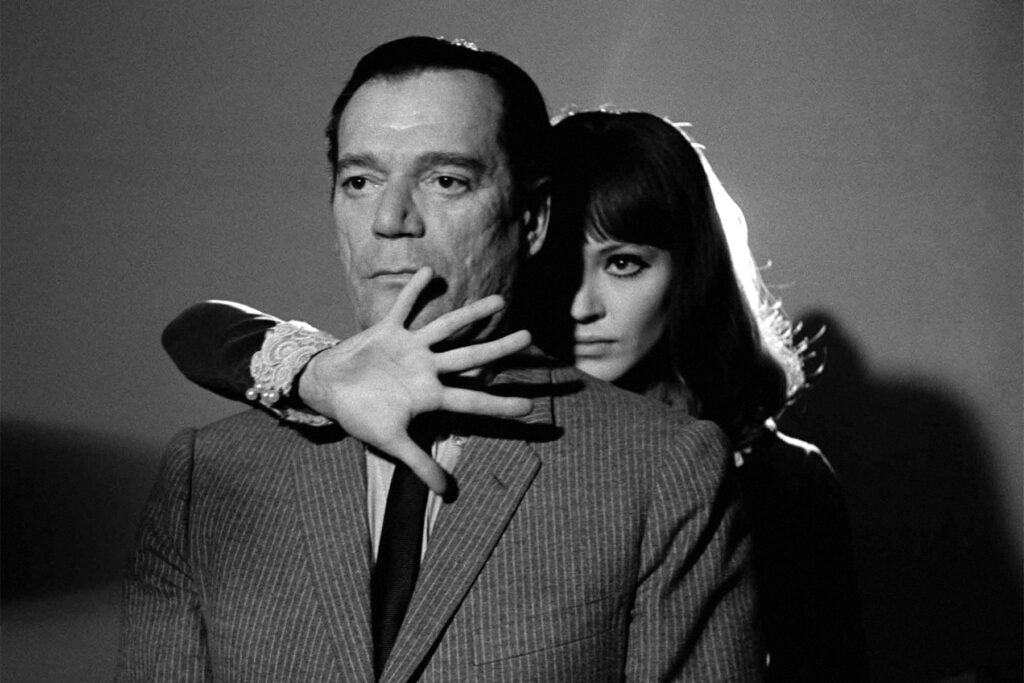
Alphaville is considered a significant movie in film studies because of its innovative visual style, its exploration of complex themes, and its influence on later filmmakers. Godard blended elements of film noir and science fiction to create a unique and unconventional film.
The film’s themes of totalitarianism, technology, and the nature of reality are still relevant today and continue to be studied in film courses. Additionally, Alphaville’s visual style, which often employs surreal and abstract imagery, is considered a significant contribution to the science fiction genre. Definitely a film school favourite!
Check out Our Top 5 Jean-Luc Godard Films here.
B is for Barbarella (1968) dir. Roger Vadim. Starring Jane Fonda as the title character. The film is based on a French comic book series of the same name and is set in the 41st century, following the adventures of Barbarella, a space-faring adventurer who is sent on a mission to find and capture the evil scientist Durand Durand.
The film is significant in film studies for several reasons. Firstly, it is considered a landmark in the development of the science fiction genre, as it was one of the first major science fiction films to be produced in the 1960s. The film’s imaginative and visually striking depiction of a futuristic world, as well as its exploration of themes such as technology and artificial intelligence, helped to set the stage for later science fiction films such as Star Wars, Logan’s Run and Blade Runner.

Additionally, Barbarella is significant for its representation of gender and sexuality. The film’s depiction of the female protagonist as an independent and sexually confident woman was highly controversial at the time of its release, and it has since been noted as a feminist film that challenges traditional gender roles and representations of women in film.
Barbarella is also notable for its use of special effects and visual techniques. The film’s imaginative and fantastical visual style, which includes a wide range of futuristic landscapes and creatures, was achieved through a combination of practical effects, miniatures, and animation, and it helped to establish a new visual language for science fiction filmmaking.
C is for Citizen Kane (1941) dir. Orson Welles. His directorial debut was also his masterpiece and despite the career that followed, he never quite managed to match the pure genius contained within his first movie. The film tells the story of the life and legacy of Charles Foster Kane, a powerful newspaper tycoon.
It is considered a masterpiece of American cinema and is often cited as one of the greatest films ever made. It is significant in film studies for several reasons. It is known for its innovative use of techniques such as deep focus, long takes, and the use of a non-linear narrative structure. These techniques were groundbreaking at the time and have had a significant influence on the way films are made ever since.
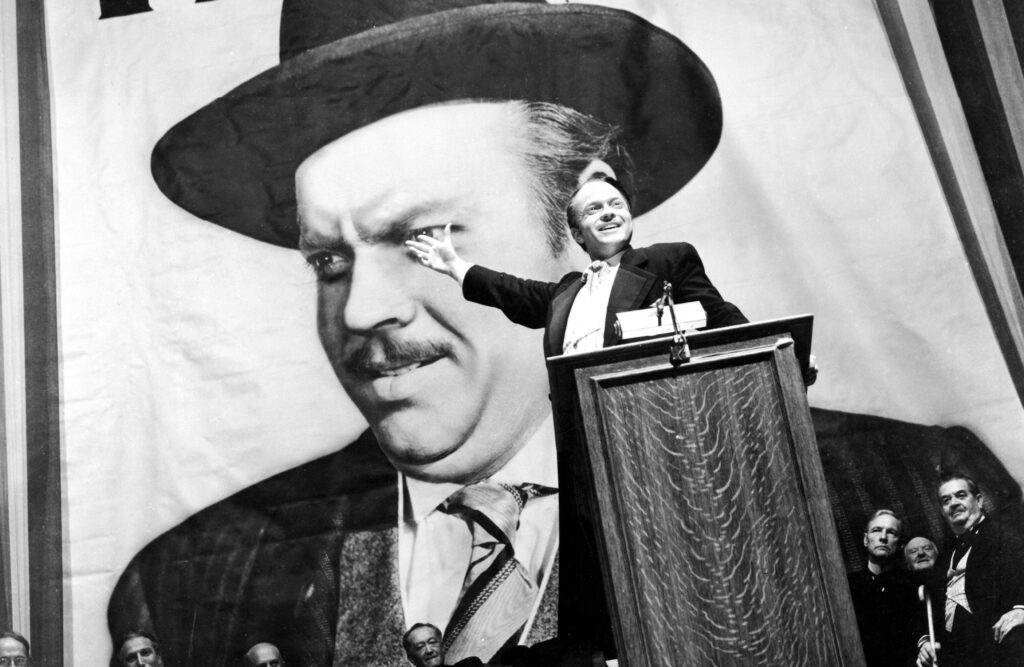
Citizen Kane is often cited in film school as an example of the “auteur theory,” which posits that a film’s director is the primary creative force behind a film. Orson Welles, who directed, wrote, produced, and starred in the film, is considered one of the most important auteurs in film history.
This movie is widely acknowledged as a seminal piece in the history of motion pictures and is considered to be one of the greatest ever made. The film’s cinematic techniques and innovative storytelling methods have had a profound influence on the way films are made today, and many critics and film-makers continue to study it as an example of cinematic excellence.
Check out Our Top 5 Orson Welles Films here.
D is for Downfall (2004) dir. Oliver Hirschbiegel. This German-Italian-Austrian historical war drama is based on the last days of Adolf Hitler and the fall of the Third Reich. It stars Bruno Ganz as Hitler and Alexandra Maria Lara as his secretary Traudl Junge.
This movie is significant for its use of historical accuracy. Downfall seamlessly recreates every detail with the filmmakers having used old newsreel footage, photographs and interviews with witnesses to accurately recreate the final days of the Third Reich. This creates an extreme sense of realism and authenticity that adds to the film’s huge impact.
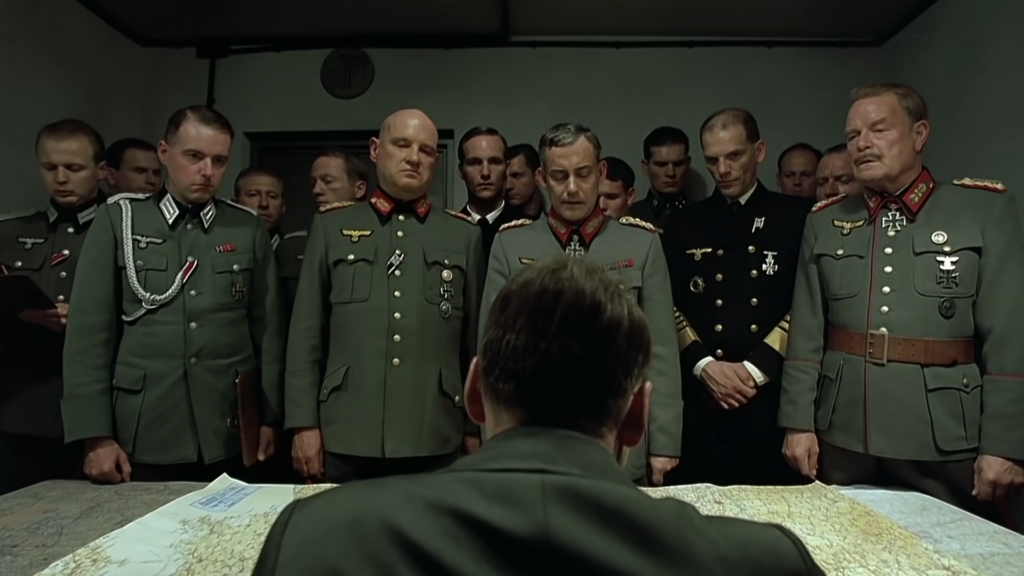
Downfall is significant for its exploration of the themes of power, propaganda and the consequences of blindly following authority. The film raises important questions about the nature of evil and the responsibility of individuals in the face of oppressive regimes.
Overall, this movie is considered a powerful and thought-provoking work that makes a significant contribution to film studies in terms of its historical accuracy, its exploration of complex themes and its impact on audiences.
E is for Everything, Everywhere All at Once (2022) dir. Daniel Scheinert and Daniel Kwan. This incredible movie has been praised for its bold and experimental storytelling, as well as its striking visuals and thought-provoking themes. Even though this is the most recently released movie on our list, we firmly believe it will become a future film school favourite.
It has been nominated for several awards in major film festivals and has also recently been nominated for 11 Academy Awards. The film explores the themes of time, space, and the nature of reality, and it delves into the possibilities and limitations of human consciousness, and the impact of technology on our understanding of the world. It explores human relationships and questions love, loyalty and a complete array of emotions in a witty yet profound way.

Its visual effects and cinematography are also noteworthy. It pushes the boundaries of what is possible in a movie and sets a new standard for science fiction filmmaking. It is a significant in film studies as it is a unique and original take on the sci-fi genre. It is also notable for its use of non-linear storytelling and its exploration of the relationship between technology and humanity.
As the most recent movie on our list, we think that the debate and academic exploration of Everything Everywhere All at Once has only just begun. Who knows how many books and papers will be written about this amazing movie and how many film school courses will include it as a case study in the years to come.
Check out our podcast episode about this movie here.
F is for Festen (1998) dir. Thomas Vinterberg. The film’s title translates to ‘The Celebration’ in English. It is based on the play ‘Festen’ by Vinterberg and Mogens Rukov and tells the story of a family gathering to celebrate the 60th birthday of the patriarch, Helge. During the event, the eldest son, Christian, reveals a dark secret about his father’s past that threatens to tear the family apart.
The film is significant in film studies for a number of reasons. Firstly, it is considered one of the key films of the Danish Dogme 95 movement, a filmmaking collective which included Vinterberg and Lars von Trier, both of whom sought to strip away the conventions of traditional filmmaking and focus on naturalistic storytelling. Festen was the second film to be made under the Dogme 95 manifesto, and it is seen as a groundbreaking and influential work in this genre. Many world cinema film school modules include this movie on their watchlists.

Another reason why Festen is significant in film studies is its use of a non-linear narrative structure. The film jumps back and forth in time, allowing the audience to piece together the story of the family and the events leading up to the revelation of the dark secret. This narrative structure is seen as innovative and adds to the film’s emotional impact.
Additionally, it is also a film school favourite for its exploration of themes such as family dynamics, secrets and lies, and the impact of past traumas on present relationships. Festen is a powerful and affecting portrayal of the complexities of human relationships and the ways in which past events can shape and define us.
G is for Glengarry Glen Ross (1992) dir. James Foley. The film is based on David Mamet’s 1984 Pulitzer Prize-winning play of the same name, which tells the story of a group of real estate salesmen who are struggling to make a living in a cutthroat industry.
The film features an all-star cast including Al Pacino, Jack Lemmon, Alec Baldwin, Ed Harris, and Kevin Spacey, and is considered one of the greatest films about the American workplace.
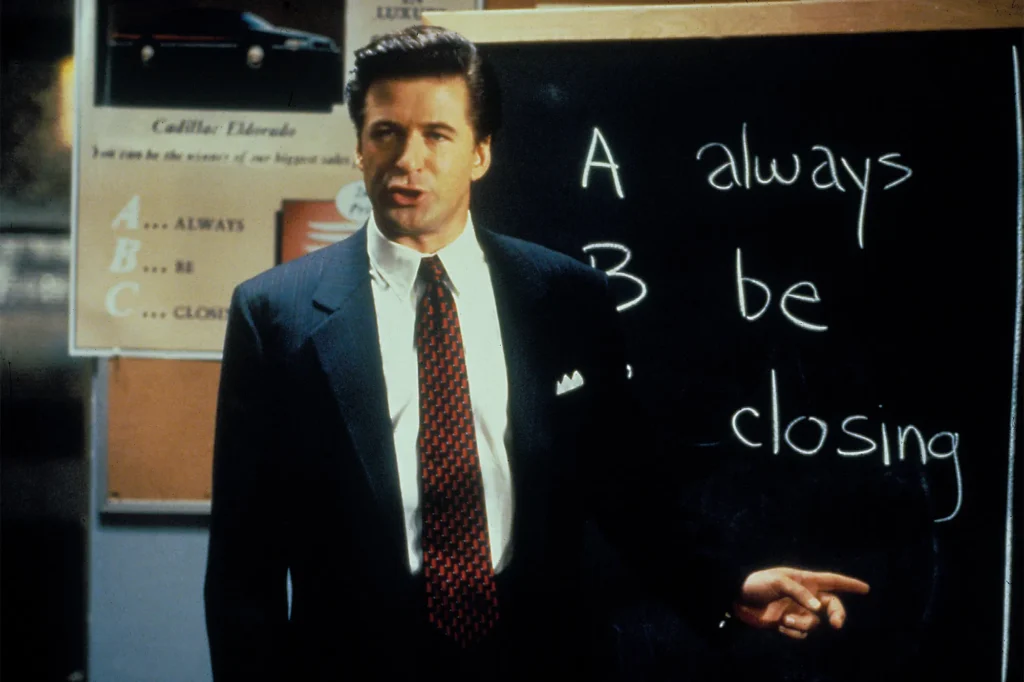
In terms of film studies, Glengarry Glen Ross is significant in several ways. Firstly, the film is an excellent example of Mamet’s unique style of writing, characterized by fast-paced dialogue and intense character interactions. The screenplay is considered to be one of the best adaptations of a stage play and is often studied in film school writing classes.
Secondly, it is significant for its depiction of the American workplace, and the cutthroat nature of the real estate industry. The film explores themes of greed, corruption, and the American Dream, and is often used as a case study in film classes that explore these topics.
H is for Heaven’s Gate (1980) dir. Michael Cimino. The film stars Kris Kristofferson, Christopher Walken, Isabelle Huppert, John Hurt, and Jeff Bridges. Set in the late 19th century, it tells the story of a group of European immigrants who are forced to defend themselves against a wealthy cattle baron and his hired guns.
Heaven’s Gate was a critical and commercial failure upon its release and is widely considered to be one of the biggest box office bombs in Hollywood history. The film’s production was plagued by delays, budget overruns, and creative differences between Cimino and the studio. It was also heavily edited by the studio, which led to Cimino disowning the final cut.
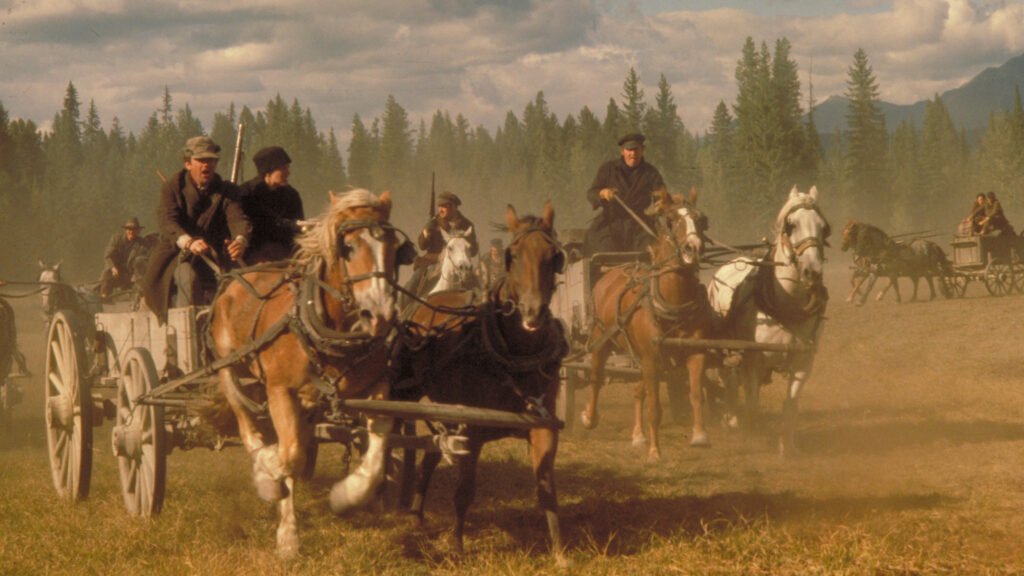
Despite its poor reception, Heaven’s Gate is considered to be a significant movie in film studies for several reasons. The use of naturalistic cinematography and the focus on the lives of immigrants in the American West is considered to be a significant departure from traditional Hollywood Westerns.
The film’s financial failure and Cimino’s subsequent fall from grace is often cited as an example of the Hollywood studio system’s inability to support and nurture artistic vision. Touted as one of the worst films ever made at the time, Heaven’s Gate effectively ended United Artists’ existence as an independent studio. However, a 2012 restoration and re-release led to a renewed critical interest in the film and its place in the history of American cinema.
I is for Irréversible (2002) dir. Gaspar Noé. This harrowing film tells the story of a woman who is brutally raped and beaten in a Parisian underpass, and the events leading up to the attack. It is notable for its non-linear narrative structure, which tells the story in reverse chronological order, beginning with the aftermath of the attack and working backwards to the events leading up to it.
Irréversible is one of the most famous examples of a film that uses a non-linear narrative structure. The audience is forced to piece together the events leading up to the attack, creating a sense of disorientation and confusion. This style of storytelling is unique and adds to the overall impact of the film.
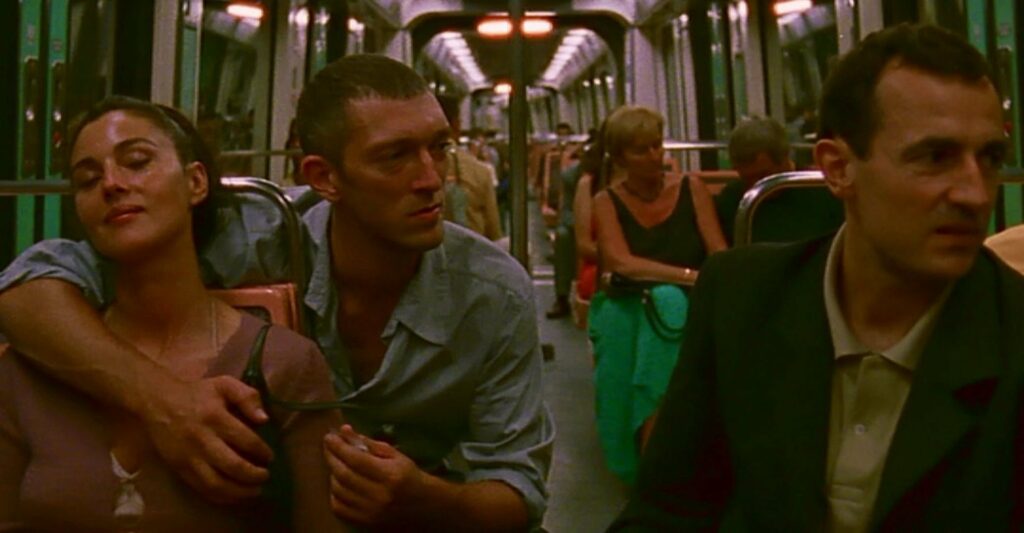
The use of sound in Irréversible is also significant, with the application of a droning, distorted soundscape throughout the film which amplifies the overall sense of unease and disorientation.
The film is known for its realistic and naturalistic approach to violence and sexual assault. The depiction of the rape scene is graphic and brutal, and it is considered one of the most controversial and disturbing scenes in the history of cinema. Many film school students have been understandably traumatized when confronted with this particular movie on their film studies course.
J is for Jaws (1976) dir. Steven Spielberg. Based on the novel of the same name by Peter Benchley the film tells the story of a great white shark that terrorizes a beach community on the New England coast. The film stars Roy Scheider, Robert Shaw, and Richard Dreyfuss.
Jaws is considered a significant case study in film school studies for a number of reasons. First and foremost, it is considered one of the first blockbuster films and is credited with revolutionizing the way Hollywood studios marketed and distributed films. The film’s success was largely due to its intense marketing campaign, which included a nationwide tour of the shark prop and a catchy theme song that became a hit.
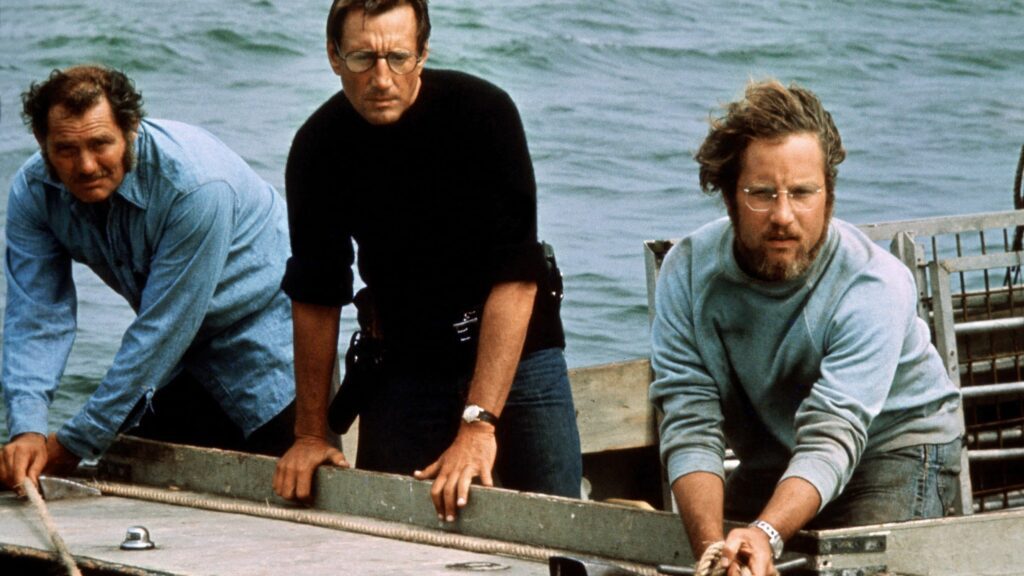
It is also significant for its technical achievements. Spielberg’s use of the shark, which was nicknamed “Bruce” by the crew, was groundbreaking for its time. The shark was actually a mechanical prop and was notoriously difficult to work with, but Spielberg was able to use it to great effect, creating suspenseful and terrifying scenes that are still considered some of the best in the genre.
Jaws is considered a seminal film in the horror genre, and is credited with re-popularizing the “creature feature” sub-genre. Its success inspired a number of imitators and sequels, and the film’s influence can still be felt in many modern movies. It also explores themes of greed, power, and the consequences of exploiting natural resources, and is often seen as a cautionary tale about the dangers of exploiting the environment for profit.
Check out Our Top 5 Steven Spielberg Films here.
K is for Klute (1971) dir. Alan J. Pakula. Starring Jane Fonda, Donald Sutherland, and Charles Cioffi. The story centers around a private detective named John Klute who is hired to investigate the disappearance of a chemical company executive. As Klute delves deeper into the case, he becomes increasingly obsessed with Bree Daniels, a call girl linked to the case. The two begin to uncover a web of corruption and murder.
Klute is known for its use of a hand-held camera, which gives the film a gritty, realistic feel. This style of cinematography was unusual for the time and helped to establish the film as a pioneer of the “New Hollywood” movement.
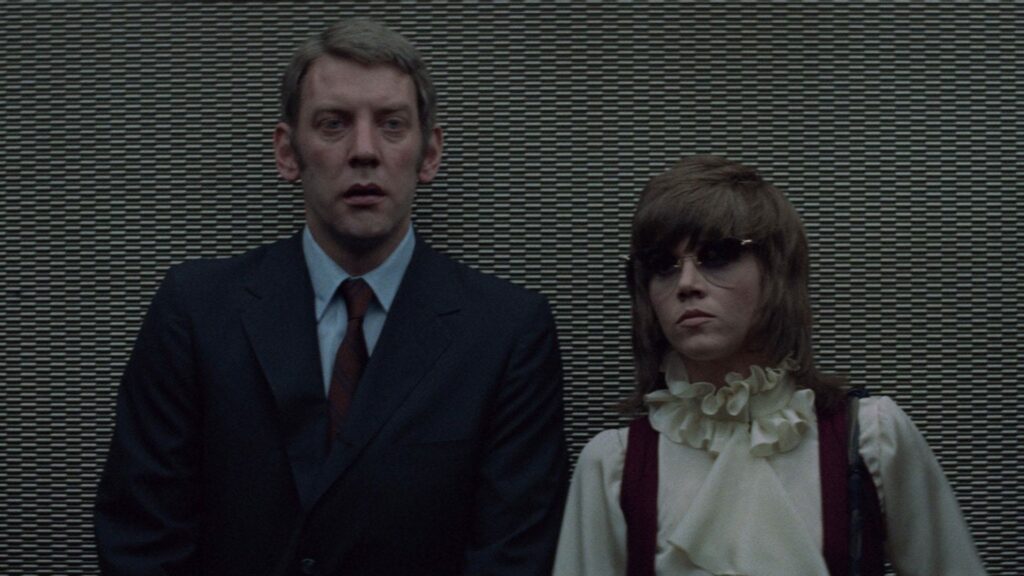
The film deals with issues of gender and power, with Bree’s character representing the strong, independent woman who is not afraid to stand up for herself. It also explores the theme of the male gaze and the way in which women are often objectified on screen. Film school courses which focus on these topics will often use Klute as a strong example of subtle subversion.
Alan J. Pakula was known for his ability to blend various genres and styles in his films, and Klute is considered one of the best examples of this. His use of suspense, tension, and psychological elements helped to create a unique and powerful film that continues to be studied and celebrated in film schools around the world.
Check out our review of Klute here.
Take a look at Our Top 5 Alan J. Pakula Films here.
L is for Laura (1944) dir. Otto Preminger. Starring Gene Tierney, Dana Andrews, Clifton Webb and Vincent Price, this film is a classic example of film noir, a genre characterized by dark and moody cinematography, complex and morally ambiguous characters, and a convoluted plot.
The film centres around a detective who is investigating the murder of the beautiful and mysterious Laura Hunt. As he delves deeper into the case, he becomes increasingly obsessed with her, even as he begins to suspect that she may have been involved in her own murder.
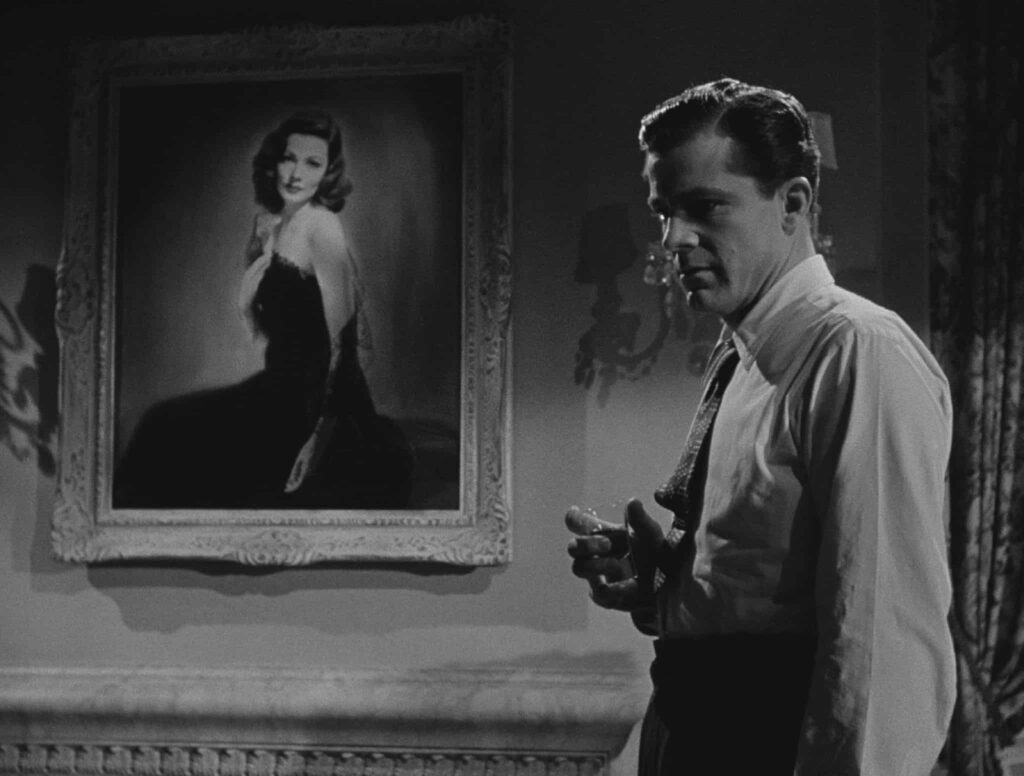
Laura is notable for its use of voiceover narration, a technique that was often used in film noir to give the audience an insight into the inner thoughts of the characters. The film also features a complex plot that keeps you guessing until the very end, and a strong emphasis on visual style, with striking black and white cinematography and a memorable score by David Raksin.
Laura is considered a classic of the film noir and is often studied as an example of the style and themes that define the genre. Additionally, Laura’s striking visual style is often cited as an example of the power of cinematography in film, and the film’s score is considered a classic. Overall, Laura is considered an important film in the history of American cinema and is a must-see for any student of film studies.
Check out our podcast episode which celebrates film noir here.
Take a look at our article A Brief History of Film Noir here.
M is for Metropolis (1927) dir. Fritz Lang. This early movie is set in a futuristic urban dystopia where the wealthy elite live in a skyscraper-filled city while the working class live in underground slums. The story revolves around a young man, Freder, who becomes embroiled in a conflict between the elite and the working class when he falls in love with a young woman, Maria, who is trying to unite the two classes.
The film is considered a classic of the science fiction genre and is often cited as one of the most important films in the history of cinema. It’s striking visuals, including the iconic image of the city’s towering skyscrapers and the underground slums, have had a profound influence on the science fiction genre and the visual style of many future films.
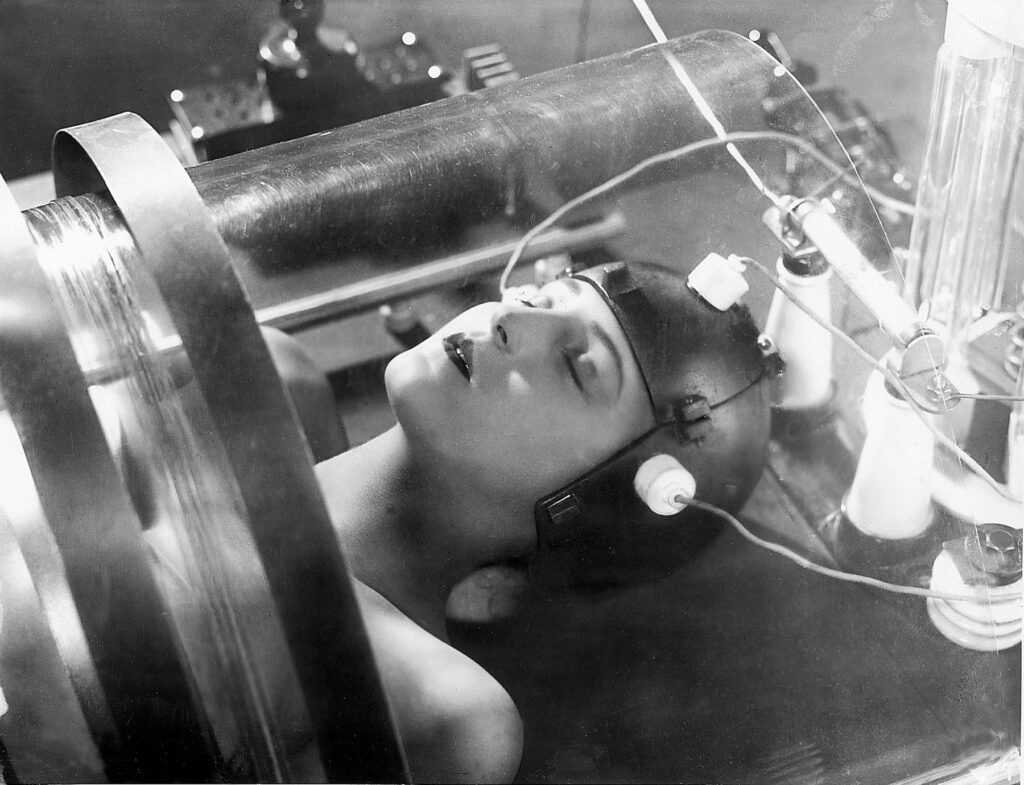
Metropolis is often studied for its representation of the class struggle and its critique of industrialization and technology. The film’s depiction of a society divided between the wealthy elite and the working class is seen as a commentary on the social and political issues of the time in Weimar Germany. Additionally, the film’s use of special effects and its exploration of the relationship between technology and society are also significant to film school scholars.
Overall, Metropolis is considered a groundbreaking film that has had a lasting impact on the science fiction genre and the broader film industry. Its themes, visual style, and use of special effects continue to be studied and analyzed by film students everywhere.
N is for Nightmare Alley (1947) dir. Edmund Goulding. Starring Tyrone Power, Joan Blondell, and Helen Walker, this criminally underrated film is based on a novel of the same name by William Lindsay Gresham and tells the story of a carnival barker who rises through the ranks of the circuit by using his skills as a con artist and manipulator.
The film is significant in film studies for its exploration of the dark and seedy underbelly of American society, as well as its portrayal of the carnival as a metaphor for the corrupt and exploitative nature of the entertainment industry. The film also explores themes of power and manipulation, as the protagonist uses his charm and intelligence to exploit those around him for his own gain.
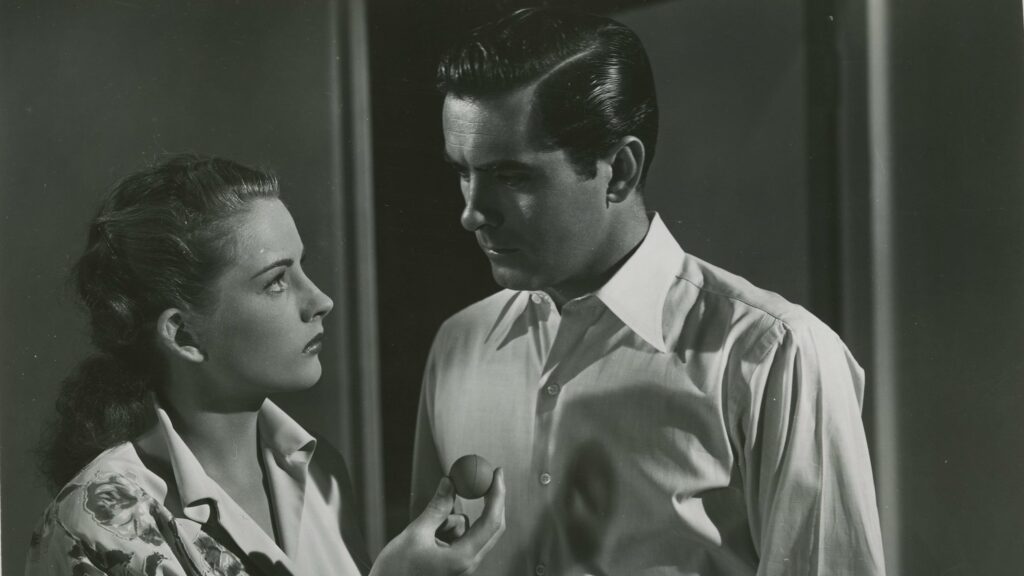
Nightmare Alley is also notable for its use of film noir conventions, such as its shadowy cinematography and morally ambiguous characters. The film’s style and tone have been compared to the work of other film noir directors such as Billy Wilder and Fritz Lang.
In addition, the film is also remembered for its strong performances, particularly from Tyrone Power, who was known for his roles in swashbuckling adventures and romantic comedies but was able to deliver a darker and more complex performance here, playing against type which no doubt provided him with much greater artistic satisfaction.
Check out our podcast episode where we discuss Nightmare Alley here.
O is for On The Waterfront (1954) dir. Elia Kazan. Starring Marlon Brando, Karl Malden, Eva Marie Saint and Lee J. Cobb, this powerful social drama tells the story of a disillusioned and conflicted longshoreman, Terry Malloy, who becomes embroiled in a struggle against corruption and racketeering among the union bosses on the New York City waterfront.
On the Waterfront is considered one of the most iconic examples of the “Method” acting style, which emphasizes the use of personal experiences and emotions to create realistic performances. Marlon Brando’s portrayal of Terry Malloy is widely considered one of the greatest performances in the history of cinema, and helped to establish him as one of the most influential actors of his generation.
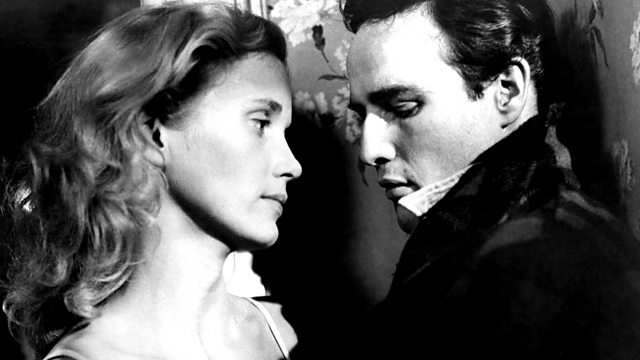
The film deals with themes of corruption, power, and redemption, and is often seen as a commentary on the political and social climate of the time. It was released during the height of the Cold War and the Hollywood Blacklist, and many have interpreted it as a critique of the anti-Communist witch hunts of the era. Others have suggested it celebrates the informant and have accused the film’s director of cooperating with the House Committee on Un-American Activities.
This classic movie is notable for its striking visual style, which was heavily influenced by the documentary photography of the era. The film’s cinematographer, Boris Kaufman, used a handheld camera and natural lighting to create a gritty, realistic look that helped to give the film its powerful sense of realism. Still screened regularly in every good film school worth its salt.
P is for Pulp Fiction (1992) dir. Quentin Tarantino. Widely considered to be one of the greatest films ever made, this seminal movie is known for its nonlinear narrative structure, which interweaves several parallel storylines that revolve around the Los Angeles criminal underworld. The film’s title refers to the pulp magazines and hardboiled crime novels popular in the mid-20th century.
Pulp Fiction has had a significant impact on contemporary American cinema and is often cited as a touchstone of 1990s independent film. Its unconventional narrative structure, dark humor, and pop culture references have been widely imitated and parodied.
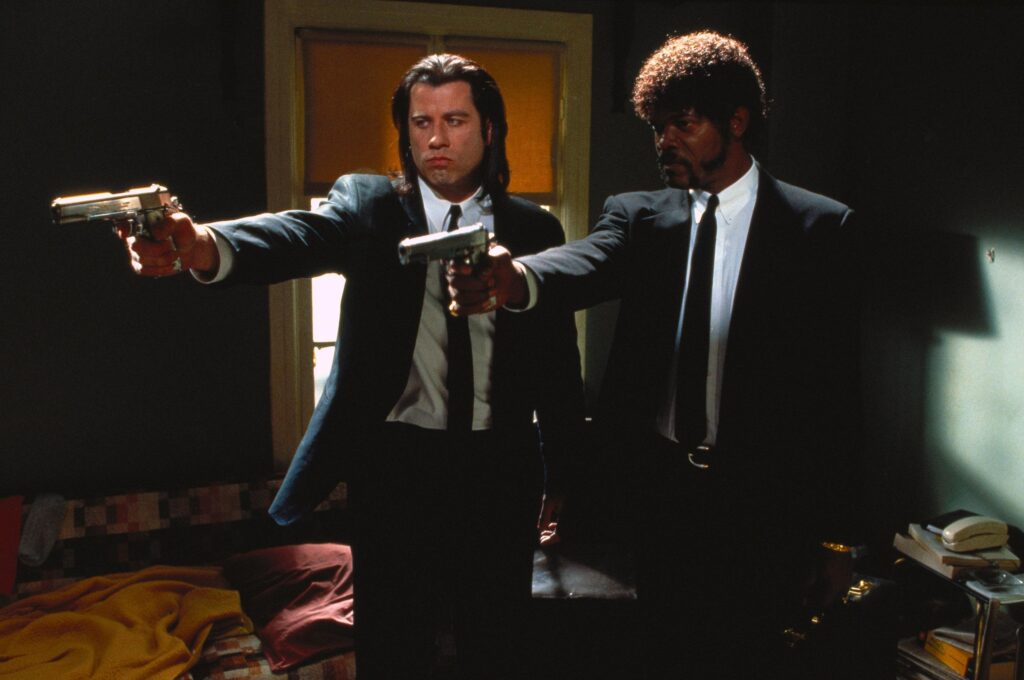
The film’s use of nonlinear storytelling and interweaving of multiple storylines has been seen as a major influence on a number of films, television shows, and other forms of media. The cultural significance of Tarantino’s cinematic stylings including a prolific use of violence and realistic dialogue which remain hot topics of debate and continue to inform and draw criticism in equal measure. Film school students and lecturers will find themselves divided when it comes to deabting this notorious filmmaker.
In film studies, Pulp Fiction is often discussed in relation to postmodernism and the breaking down of traditional narrative structures. It has also been scrutinized in relation to issues of representation, particularly with regard to race and gender. Additionally, the film’s exploration of the criminal underworld and its use of violence as a narrative device have also been the subject of much analysis.
Check out Our Top 5 Quentin Tarantino Films here.
Q is for Quest for Fire (1981) dir. Jean-Jacques Annaud. This prehistoric adventure drama is set 80,000 years ago and follows a tribe of early humans as they search for a source of fire to replace their own that has been lost. The film is notable for its depiction of early human culture and its use of special language forms created especially for the movie.
The film is significant for its innovative use of visual storytelling to convey a complex historical and cultural narrative. It also showcases the possibilities of world-building and immersive storytelling in the science fiction and fantasy genres.
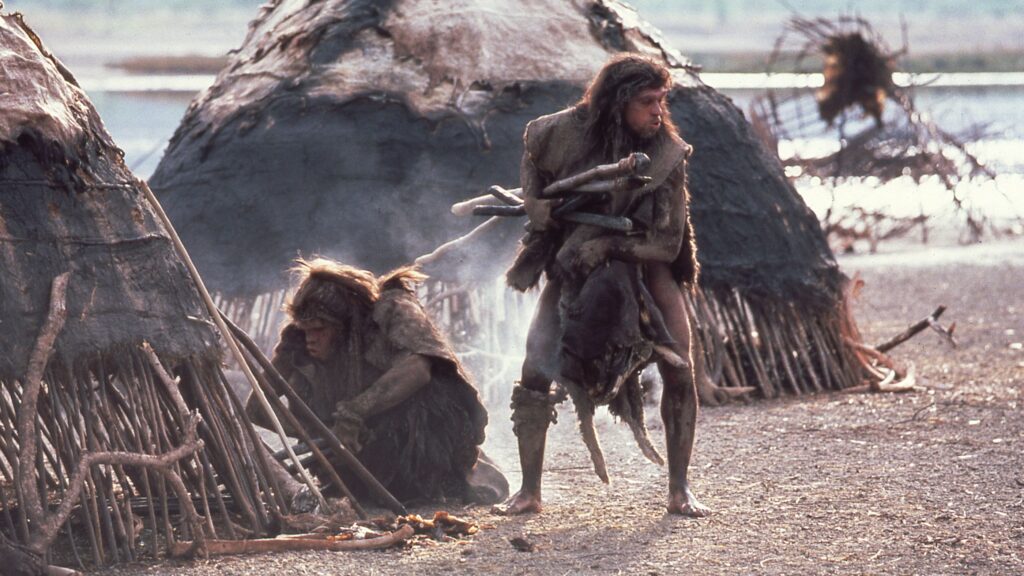
Quest for Fire was praised for its attention to detail, including the use of accurate props, costumes, and makeup to bring the prehistoric setting to life. It is also significant for its visual storytelling, which conveys a rich cultural and historical narrative without relying on dialogue.
This film is notable in the world of science fiction and fantasy movies. The successful attempt at bringing a prehistoric setting to life set a high bar for future films in these genres. Film school studies that integrate anthropology within the module will often incorporate this excellent movie.
R is for Rope (1948) dir. Alfred Hitchcock. This psychological thriller is based on a stage play of the same name by Patrick Hamilton. The film is notable for its innovative use of long, unbroken takes and its depiction of homosexual characters in a time when homosexuality was considered taboo and illegal in many countries.
In the film, two young men, Brandon and Phillip, strangle a fellow classmate in their apartment, hide the body in a chest, and host a dinner party for the deceased’s friends and family, all while the body is in the room. The film explores themes of guilt, morality, and the psychological motivations behind the crime, as well as the struggle between the two young men’s desire for control and power over others.
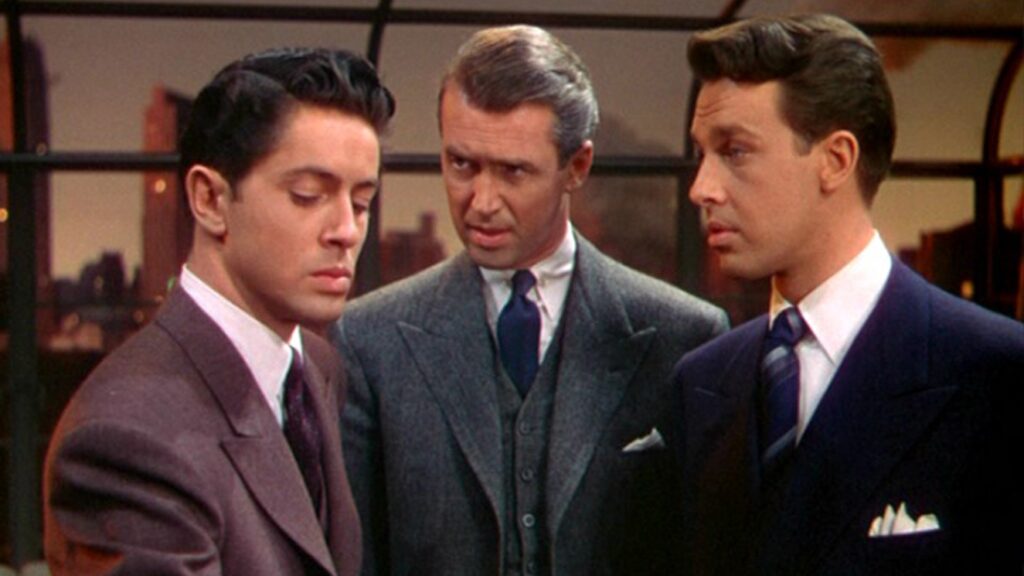
The portrayal of the two main characters as openly homosexual, at a time when homosexuality was still widely stigmatized and often criminalized, is significant in film studies. Rope challenged societal norms and broke taboos by depicting queer characters as complex, multi-dimensional individuals, rather than caricatures or stereotypes.
Despite being ahead of its time in terms of its depictions, the film was not well received by contemporary audiences and was criticized for its explicit themes. Nevertheless, Rope is now considered a classic of American cinema and is frequently studied in film school classes for its innovative techniques and its trailblazing portrayals.
Check out our review of Rope here.
S is for Shoah (1985) dir. Claude Lanzmann. This documentary is considered a masterpiece of filmmaking, and is widely regarded as one of the most important films about the Holocaust. It is nearly nine and a half hours long and is comprised of interviews with survivors, witnesses, and perpetrators.
Lanzmann’s approach to the subject matter is unique in that he avoids using any archival footage, relying instead on firsthand accounts and reenactments. This approach was controversial at the time, but has since become a model for other documentaries on the Holocaust.
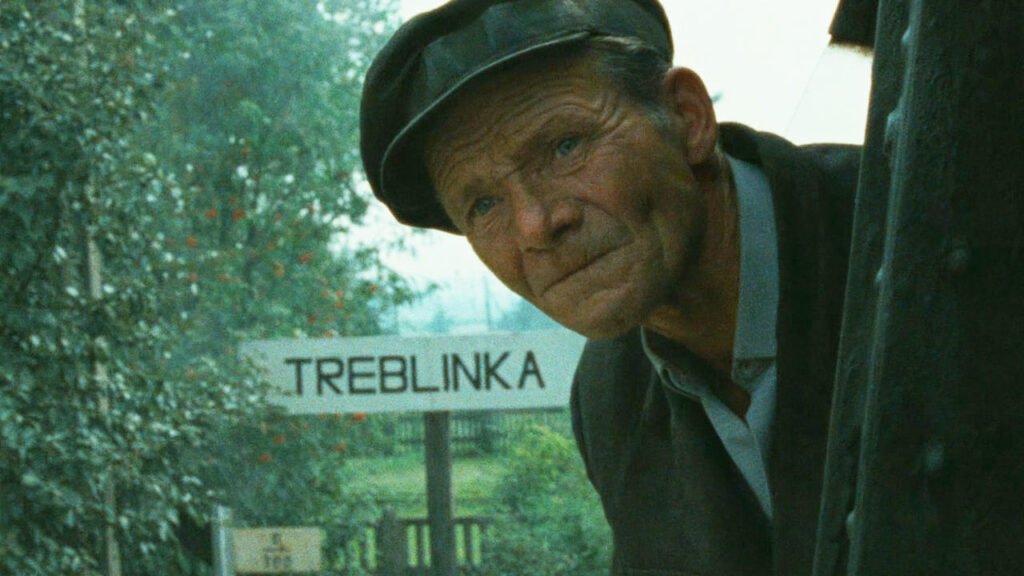
This important film serves as a testament to the power of oral history. Lanzmann’s interviews with survivors and witnesses are often emotional and poignant, and provide a unique perspective on the events described. Shoah also sheds light on the complexities of memory, as the witnesses’ accounts often diverge and contradict one another.
Shoah challenges assumed notions of documentary filmmaking. The film’s length and unconventional approach challenge viewers to engage with the material in a different way than they might with a traditional documentary. It is a film that demands the viewer’s attention, and its impact is lasting.
T is for Taxi Driver (1976) dir. Martin Scorsese. This iconic film stars Robert De Niro as the protagonist, Travis Bickle, a lonely and disillusioned taxi driver in New York City who descends into a violent, self-destructive spiral. It is widely considered to be a classic of American cinema and one of the greatest films of all time.
The film provides a vivid portrayal of a character’s psychological decline into isolation and violent extremism. It is a complex character study that delves into the motivations and psychology of a man struggling with loneliness, mental health issues, and political frustration.
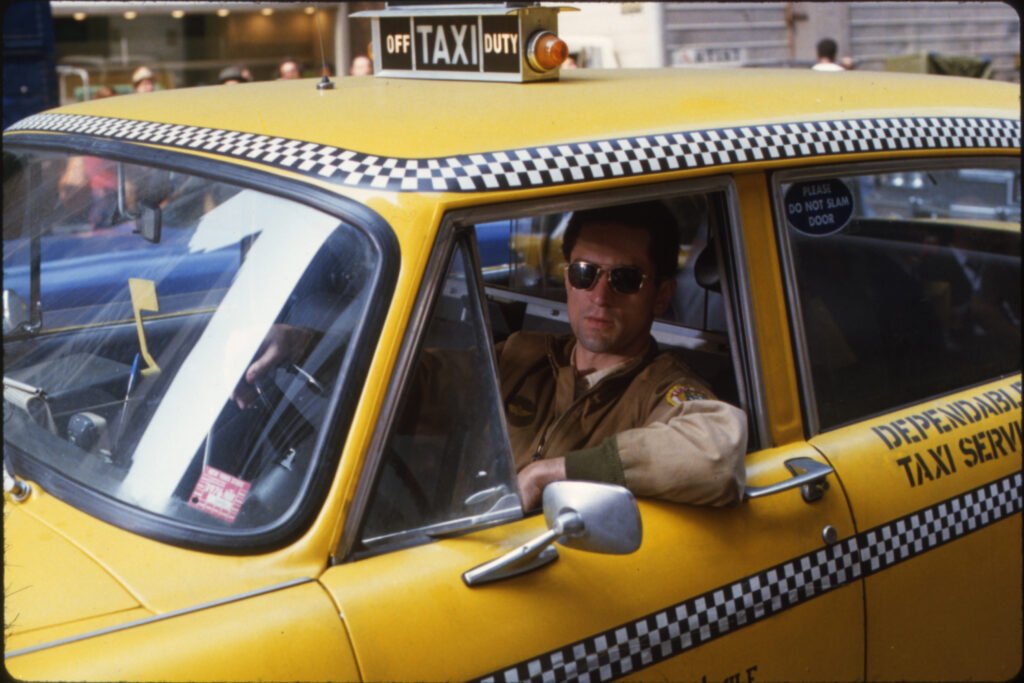
Noted for its bold, striking cinematography, Scorsese makes use of dark, moody lighting and a neon-lit cityscape to create an atmosphere of urban decay and loneliness. This style has become a hallmark of his work and is widely imitated in contemporary films.
Taxi Driver can be seen as a commentary on the social and political climate of the 1970s in America, with themes of urban decay, political corruption, and the decline of morality. The film is also an allegory for the loss of the American Dream, with Travis’s descent into violence serving as a symbol of the country’s loss of hope and disillusionment with the system in the wake of the war in Vietnam.
U is for Unforgiven (1992) dir. Clint Eastwood. The story follows a retired gunfighter named William Munny, who takes one last job to collect a reward for the murder of two cowboys who disfigured a prostitute. Along the way, he is joined by an old friend and a young drifter, as they each confront the harsh realities of the Wild West and their own ambiguous moral codes.
Unforgiven is considered a revisionist Western, as it subverts many of the traditional conventions of the Western genre. The film challenges the romanticized image of the gunslinger and portrays the harsh realities of violence and retribution in the Old West.
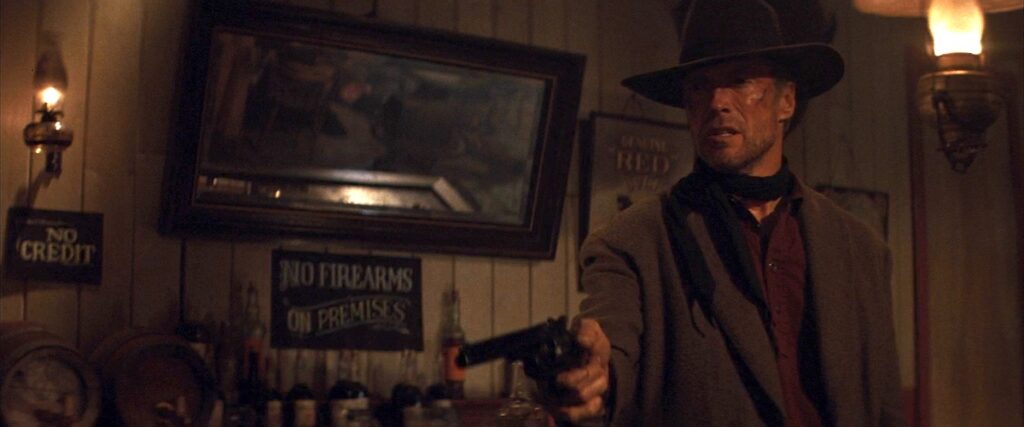
Clint Eastwood is a legendary figure in Hollywood and this movie is considered one of his best works. It demonstrates his ability to craft complex, nuanced stories that are both engaging and thought-provoking. The characters are well-developed and each has their own motivations and conflicts. Munny, for example, is a flawed hero who must grapple with his past as a violent man.
The film won four Oscars in 1993, including Best Picture, Best Director for Eastwood, and Best Supporting Actor for Gene Hackman and undoubtedly re-moulded the traditional visions of the Western, influencing a string of movies that were produced in the years that followed.
Check out Our Top 5 Clint Eastwood Films here.
V is for Vertigo (1958) dir. Alfred Hitchcock. Starring James Stewart and Kim Novak, this incredible film is a psychological thriller that follows the story of a retired police detective, Scottie Ferguson, who becomes obsessed with a woman he is hired to follow, Madeleine Elster. It is notable for its intricate plot, suspenseful atmosphere, and innovative cinematography and sound design.
Vertigo is often considered one of the greatest films of all time and a masterpiece of the suspense genre. The film is also significant for its exploration of themes such as obsession, identity, and the male gaze and one of the many films that cement Alfred Hitchcock’s reputation as one of the greatest filmmakers of all time.
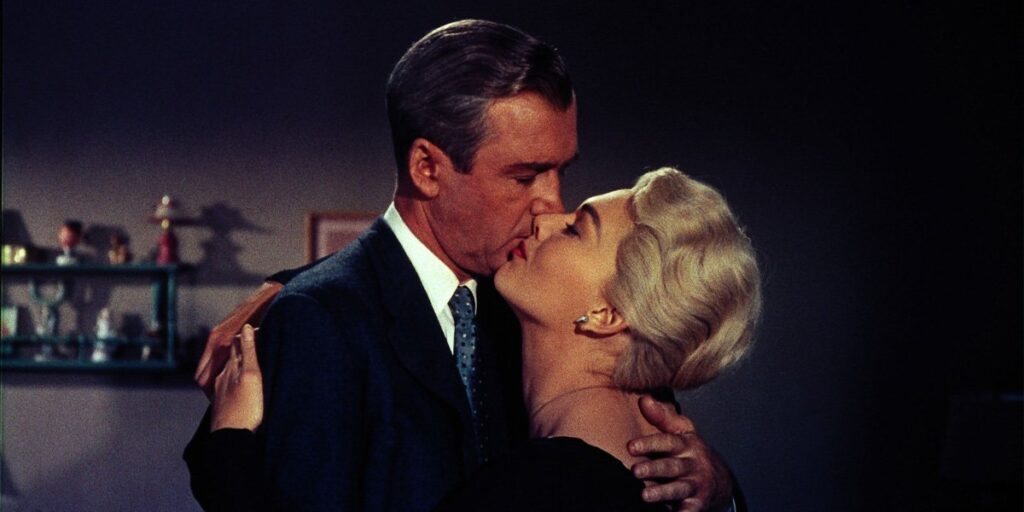
Its use of subjective camera angles and its innovative sound design, which employs the use of music and sound effects to create a sense of vertigo, has had a lasting impact on the way that filmmakers approach the use of sound design and visuals in their work.
In film school, Vertigo is often considered a key example of film noir, a genre that is characterized by its use of dark, atmospheric lighting and its exploration of themes such as crime, corruption, and moral decay. The film’s motifs of obsession and identity, as well as its intoxicating visual style, have also made it a seminal work of postmodernism.
Check out our article about this movie here.
W is for West Side Story (1961) dirs. Robert Wise and Jerome Robbins. This modern retelling of Shakespeare’s ‘Romeo and Juliet’ is set in New York City’s West Side neighborhood during the 1950s. The film tells the story of two young lovers, Tony and Maria, who are both associated with rival gangs, the Jets and the Sharks. The film features memorable songs such as “Something’s Coming,” “Maria,” and “America,” composed by Leonard Bernstein with lyrics by Stephen Sondheim, and is widely regarded as one of the greatest musical films of all time.
The film’s combination of music, dance, and drama has inspired countless other productions, both on stage and screen. It is also a prime example of how a film can tackle serious social and political issues through the use of music and dance.
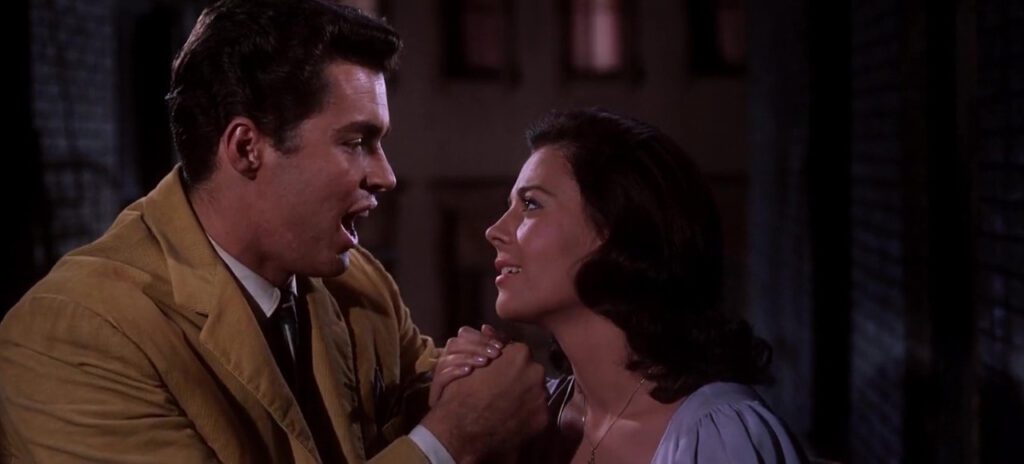
West Side Story addresses themes such as prejudice, gang violence, and assimilation, and the fact that these themes are woven into the fabric of the film’s musical numbers makes them all the more powerful. Their are many aspects to this movie which can be dissected and analysed by film school students.
The movie’s dance sequences, choreographed by Jerome Robbins, are some of the most memorable and dynamic in film history, and the film’s cinematography, which makes use of handheld cameras, split-screens, and other techniques, was way ahead of its time.
Take a look at our review of this movie here.
Check out our essay about West Side Story here.
Watch or listen to our podcast in which we compare and contrast the 1961 film with Spielberg’s updated version here.
X is for Malcolm X (1992) dir. Spike Lee. Based on the life of African American human rights activist and Black Nationalist leader Malcolm X, this film covers the major events and experiences that shaped the man’s life, including his time as a street criminal, his conversion to Islam, his rise to prominence as a civil rights leader, and his eventual assassination in 1965.
The film is based on extensive research and incorporates real-life footage of Malcolm X’s speeches, making it a valuable source of information about his life and activism. It also highlights the struggles and experiences of African Americans in the mid-20th century, and provides a nuanced depiction of the Black Nationalist movement.
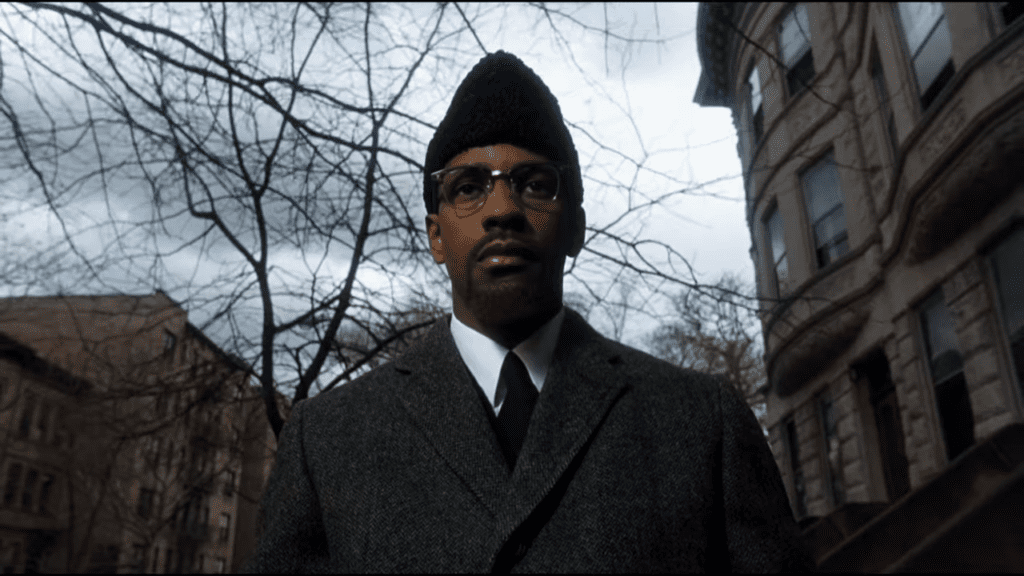
Malcolm X incorporates imaginative visual imagery and symbolism to create a rich and complex visual language that adds depth and meaning to the story. Spike Lee’s direction and screenwriting for the film highlight the importance of having black voices behind the camera, and challenge Hollywood’s historical lack of representation of black filmmakers.
It is also notable for its innovative use of montage, split-screen images, and musical score, which are used to create a dynamic and immersive viewing experience. Denzel Washington gives a career-defining performance as Malcolm and this film represents the pinnacle of his collaborations with the film’s director Spike Lee.
Check out Our Top 5 Spike Lee Joints here.
Y is for Young Frankenstein (1974) dir. Mel Brooks. This hilarious parody of the classic horror genre stars Gene Wilder as Dr. Frederick Frankenstein, the grandson of the infamous Dr. Victor Frankenstein, who continues his grandfather’s experiments in re-animating the dead. The film is a mix of humour, horror, and musical elements and features an all-star cast including Marty Feldman, Cloris Leachman, Peter Boyle and Teri Garr.
Young Frankenstein is a prime example of the comedic genre known as parody, where a well-known film or genre is satirized for humorous effect. This movie in particular is a parody of the classic horror genre and pays homage to the Universal Studios horror movies of the 1930s and 1940s.
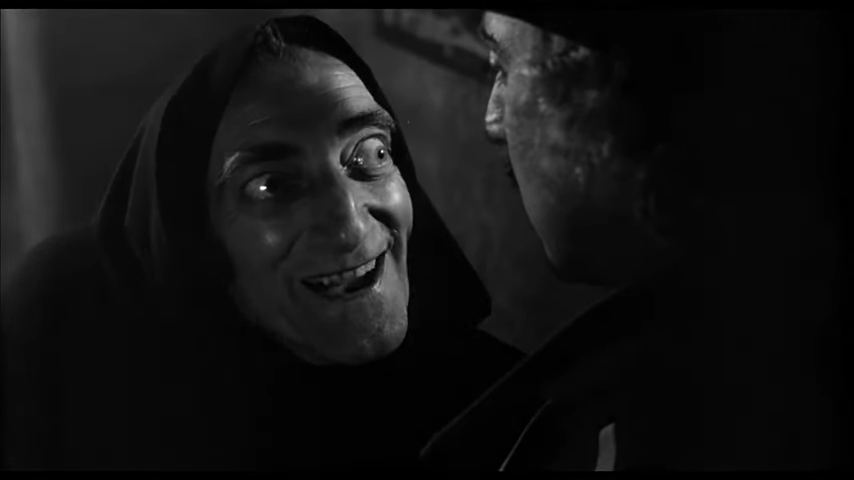
Its use of classic film techniques and visual elements, including the use of black-and-white cinematography, was unusual for a comedy film at the time. Young Frankenstein also features a memorable score composed by Brooks, which incorporates elements of the classic horror era.
With iconic performances and a plethora of memorable scenes, Young Frankenstein is significant for its influence on the horror-comedy genre, which has since become a popular sub-genre in its own right. Film school classes will often use it as a perfect example of parody and it often introduces new students to the work of the incredible Mel Brooks.
Z is for Zodiac (2007) dir. David Fincher. The movie is based on real-life events surrounding the infamous Zodiac Killer, who terrorized the San Francisco Bay Area in the late 1960s and early 1970s. It explores the investigation into the identity of the killer and the impact it had on the journalists and detectives who worked on the case.
Zodiac is significant for its use of cinematography, sound design, and editing to create a mood of suspense and unease. The film also tackles themes of obsession, the limitations of the criminal justice system, and the ways in which modern media can both help and hinder an investigation.
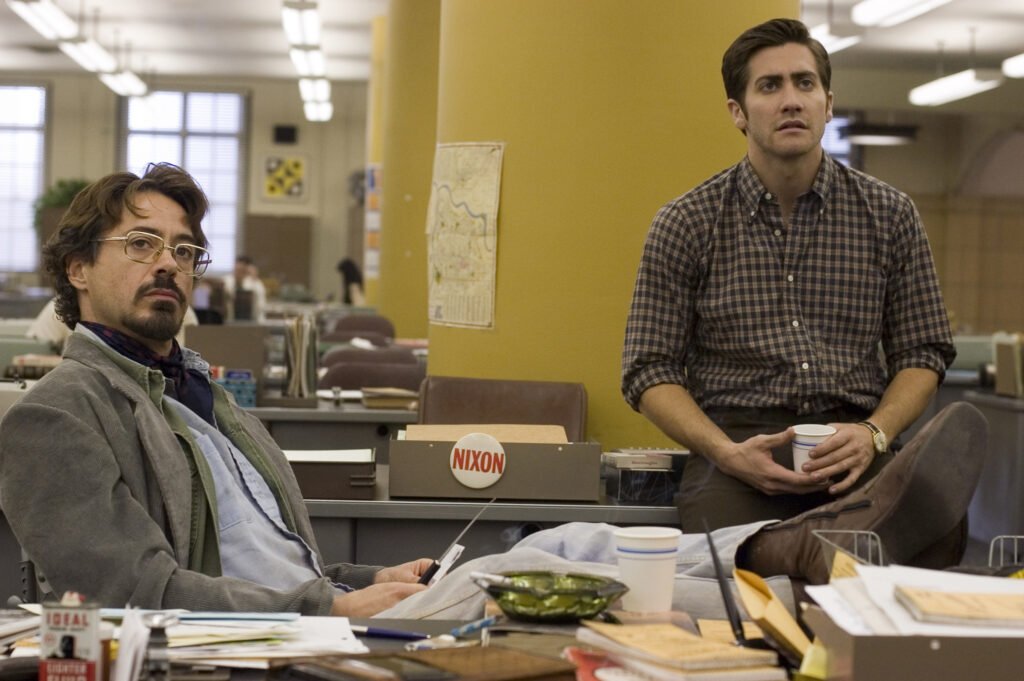
Additionally, Fincher’s meticulous attention to detail in the film’s portrayal of real-life events highlights the importance of accuracy in historical filmmaking. He uses a muted colour palette and a documentary-style approach to create a sense of realism, immersing the audience in the investigation.
The film’s sound design is a critical aspect, adding tension to the suspenseful moments and further drawing the audience into the events as they unfurl. The themes explored in the film include the obsession with uncovering the truth, the limitations of the criminal justice system, and the impact of modern media on investigations.
Check out Our Top 5 David Fincher Films here.
That’s our Movie Alphabet A-Z: Film School Edition!
Did you enjoy this article? Are you a film school student or graduate? Let us know your thoughts on film school in the comments down below!
For more episodes of More Movies Weekly as well as our other shows and podcasts, be sure to check out the Podcasts page on our website.
Remember, you can have a choice of what films we review on our Weekly podcast by joining us on Patreon here.
Please join us on social media on Facebook, Instagram, Tik Tok and Twitter. We really appreciate all the likes, shares, retweets etc., and we would love to hear from you and continue the wonderful celebration of all things cinema on these platforms.
If you love to watch videos on YouTube, then please subscribe to our channel here. There’s lots of fun and informative videos uploaded that we hope you will enjoy!
We have a passion for movies and aim to produce entertaining and informative movie-related content. It certainly is a lot of hard work, but we love films so much that it’s worth all the effort. We have to keep the lights on and make sure we have plenty of caffeine to keep all of the articles, videos and social media posts coming, so if you like our work, then please consider supporting us at Buy Me A Coffee here. You can also become a More Movies patron on Patreon here.
To help support us here at More Movies, we do use advertising in a few places, so we appreciate it if you do not use AdBlockers on our site, as this helps keep a few pennies trickling in. We also utilise affiliate links throughout the site, usually to help guide our readers to places to stream, rent or buy the movies we talk about. One of the biggest sources for movies online is Amazon Prime Video, where you can stream over 18,000 films. If you are interested in Prime and haven’t signed up yet, you can get a 30-day free trial via this affiliate link, which helps support us too.

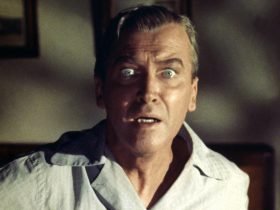
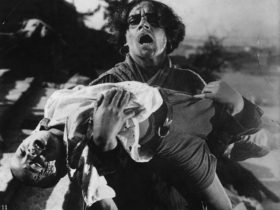


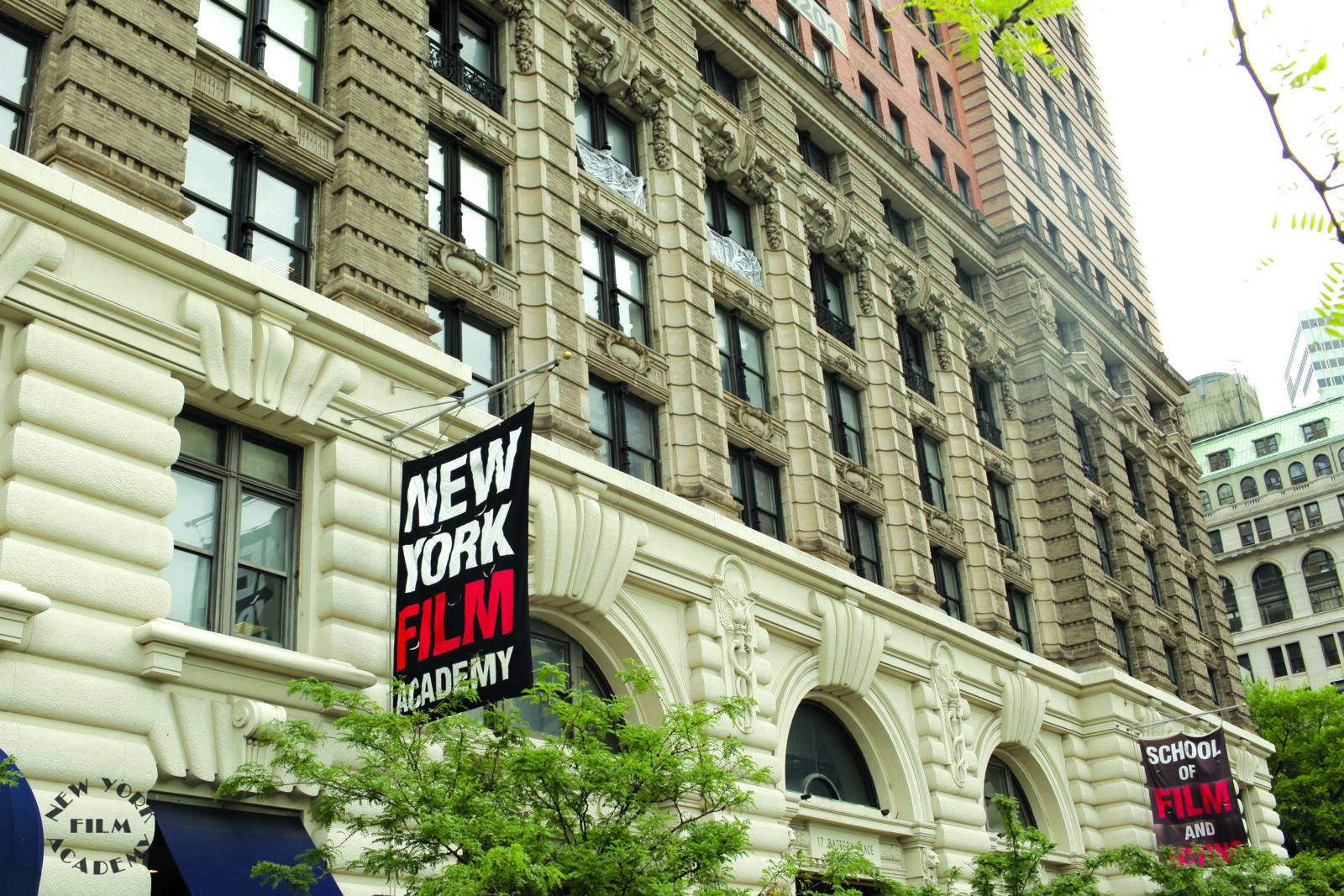
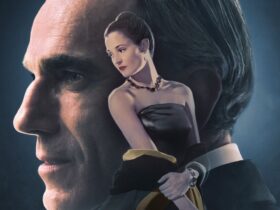


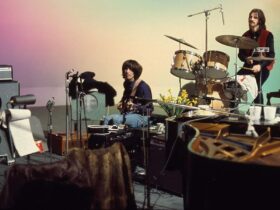
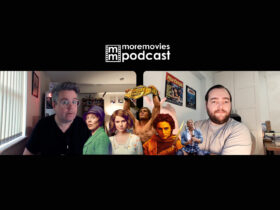
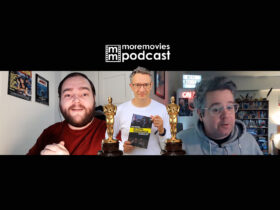
Leave a Reply